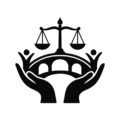Domestic Violence
What Is Domestic Violence?
Domestic violence, also known as intimate partner violence (IPV), is a pattern of abusive behavior used by one partner to gain or maintain power and control over another person in an intimate relationship. This abuse can take many forms—physical, emotional, psychological, sexual, financial, and digital. It occurs across all communities, regardless of age, gender, race, religion, socioeconomic status, or sexual orientation.
Domestic violence is not just about physical harm. It’s about domination and control. While bruises and physical injuries may be visible signs, the emotional and psychological wounds often run deeper and last longer.
Forms of Domestic Violence
- Physical Abuse
This includes hitting, slapping, pushing, choking, or using weapons to inflict harm. Physical abuse often escalates over time and can become life-threatening.
- Emotional and Psychological Abuse
This involves verbal attacks, humiliation, intimidation, manipulation, and isolation. Abusers may use tactics such as gaslighting to make victims doubt their perceptions or reality.
- Sexual Abuse
Sexual abuse includes any non-consensual sexual activity, including rape, forced sex, or coercive sex acts. It may also involve reproductive coercion, such as preventing the use of birth control.
- Financial Abuse
Controlling a person’s access to financial resources, stealing money, sabotaging employment, or creating dependency through economic means are all forms of financial abuse.
- Digital Abuse
With the rise of technology, abusers may use digital platforms to harass, stalk, monitor, or threaten victims. This includes checking messages without permission, controlling social media, or using GPS tracking.
The Cycle of Abuse
Domestic violence often follows a repetitive cycle:
- Tension Building: Stress and tension increase; the victim may feel like they’re “walking on eggshells.”
- Incident: The abuse occurs, whether it’s physical, verbal, or emotional.
- Reconciliation: The abuser may apologize, make excuses, or promise it won’t happen again.
- Calm: A temporary period of peace may occur, making the victim believe the abuse has ended.
Unfortunately, without intervention, this cycle tends to repeat and intensify over time.
Why People Stay in Abusive Relationships
There are many reasons victims stay in abusive relationships, including:
- Fear of the abuser
- Financial dependence
- Concern for children
- Cultural or religious beliefs
- Lack of support systems
- Shame or guilt
- Hope that the abuser will change
It’s crucial to understand that leaving an abusive relationship is incredibly complex and often dangerous. Supporting victims without judgment is key to helping them find safety.
Definition Under Law
Protection of Women from Domestic Violence Act, 2005
According to Section 3 of the PWDVA, domestic violence includes:
- Physical abuse: Assault, bodily injury, or any act that causes physical pain or danger.
- Sexual abuse: Any conduct of a sexual nature that abuses, humiliates, or degrades the woman.
- Verbal and emotional abuse: Insults, ridicule, humiliation, name-calling, or threats.
- Economic abuse: Deprivation of financial resources, denying access to household necessities or property, and preventing employment.
Who Is Protected?
The Act primarily protects women from violence within a domestic relationship, which includes:
- Wives
- Mothers
- Sisters
- Daughters
- Female live-in partners
The Act applies to married and unmarried relationships where the parties live in a shared household.
Rights and Legal Remedies Under PWDVA
The Act empowers victims with several rights and protective measures, including:
- Protection Order (Section 18)
Issued by a magistrate to prevent the abuser from committing any act of violence, entering the victim’s place of employment or residence, or communicating with the victim.
- Residence Order (Section 19)
A woman cannot be evicted from her shared household and may be provided alternative accommodation.
- Monetary Relief (Section 20)
The court can order the respondent to pay for medical expenses, loss of earnings, maintenance, and other financial losses.
- Custody Orders (Section 21)
Temporary custody of children can be granted to the aggrieved woman.
- Compensation Orders (Section 22)
The victim may claim compensation for physical or mental injury caused by domestic violence.
- Right to Free Legal Aid
Under the Legal Services Authorities Act, 1987, every victim of domestic violence is entitled to free legal aid.
Criminal Remedies Under IPC
Alongside civil protection, the Indian Penal Code offers criminal remedies:
- Section 498A IPC/ 85, 86 of BNS: Cruelty by husband or his relatives (punishable with up to 3 years’ imprisonment and fine).
- Section 304B IPC/ 80 of BNS: Dowry death (if a woman dies within 7 years of marriage due to dowry-related cruelty).
- Section 506 IPC/ 351(2), 351 (3) of BNS: Criminal intimidation.
- Section 323 IPC/ 115(2) of BNS: Causing hurt.
- Section 376 IPC/ 63 of BNS: Rape (in certain contexts, especially with non-consensual sexual acts).
Role of Protection Officers
The PWDVA provides for the appointment of Protection Officers (POs) by the state, who:
- Help victims file a Domestic Incident Report (DIR)
- Assist with court procedures
- Help in accessing shelter homes and medical facilities
- Ensure compliance with court orders
Emergency Contacts
- National Domestic Violence Helpline (Women’s Helpline): 181
- Police Control Room: 100
- National Commission for Women (NCW): www.ncw.nic.in
- Legal Aid Services: www.nalsa.gov.in
Author: Nyaya Setu Legal Association
Disclaimer: This article is intended for informational purposes only and does not constitute legal advice. For specific legal assistance regarding Domestic Violence, please consult us for more option.

